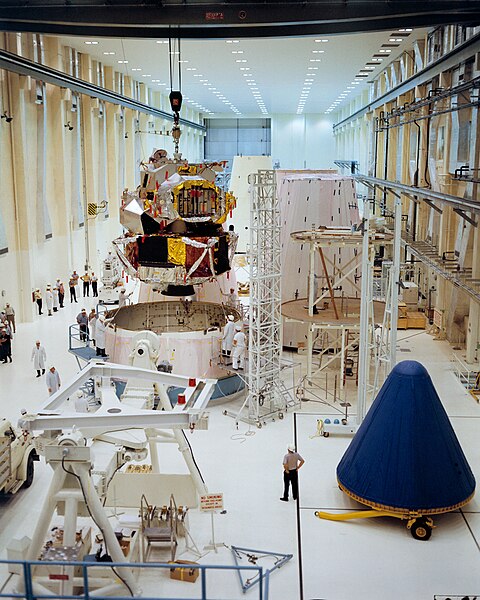Apollo 5, also known as AS-204, was the uncrewed first flight of the Apollo Lunar Module (LM) that would later carry astronauts to the surface of the Moon. The Saturn IB rocket bearing the LM lifted off from Cape Kennedy on January 22, 1968. The mission was successful, though due to programming problems an alternate mission to that originally planned was executed.
Lunar Module 1 being mated to the Spacecraft–LM adapter (SLA) in preparation for launch as Apollo 5
LM-1 is delivered by Super Guppy aircraft, June 23, 1967
Apollo 5's Saturn IB on the launchpad
Director of Flight Operations Christopher C. Kraft (left) and Manned Spaceflight Center director Robert R. Gilruth in Mission Control during Apollo 5
The Apollo Lunar Module, originally designated the Lunar Excursion Module (LEM), was the lunar lander spacecraft that was flown between lunar orbit and the Moon's surface during the United States' Apollo program. It was the first crewed spacecraft to operate exclusively in the airless vacuum of space, and remains the only crewed vehicle to land anywhere beyond Earth.
Apollo 16 LM Orion on the lunar surface, 1972
Lunar Module Eagle, the lunar module ascent stage of Apollo 11, in orbit above the Moon. Earth is visible in the distance. Photograph by Michael Collins aboard the Command module Columbia.
A 1962 model of the first LEM design, docked to the command and service module. The model is held by Joseph Shea, the key engineer behind the adoption of lunar orbit rendezvous mission logistics.
This 1963 model depicts the second LEM design, which gave rise to informal references as "the bug".








